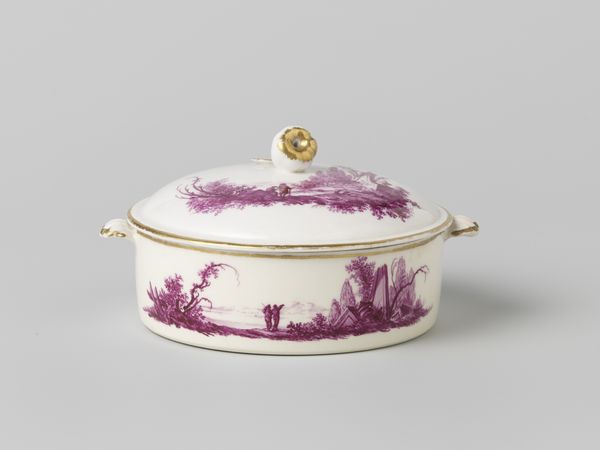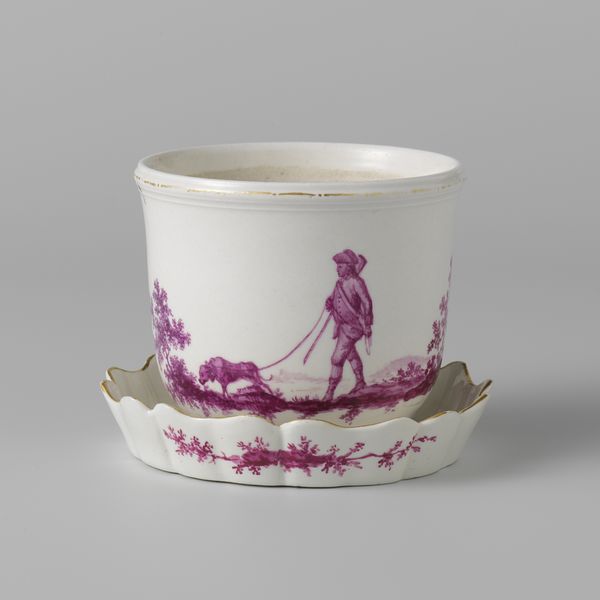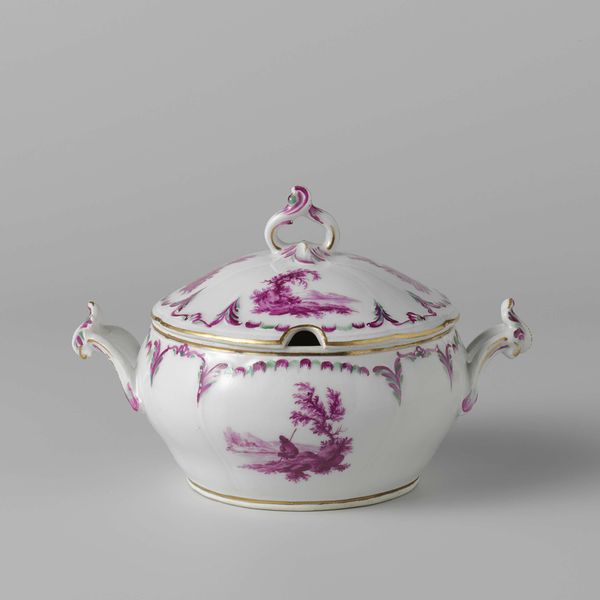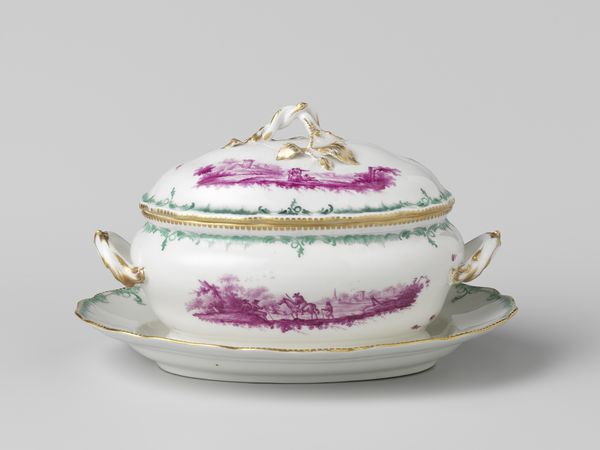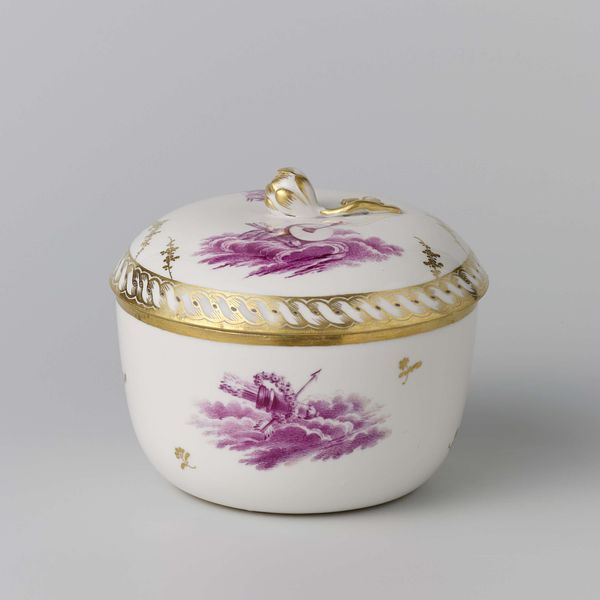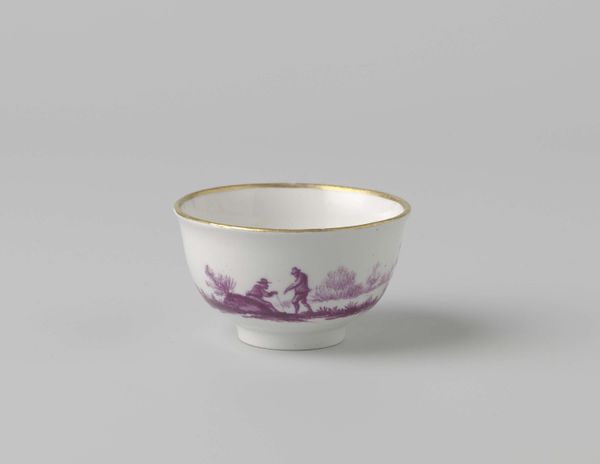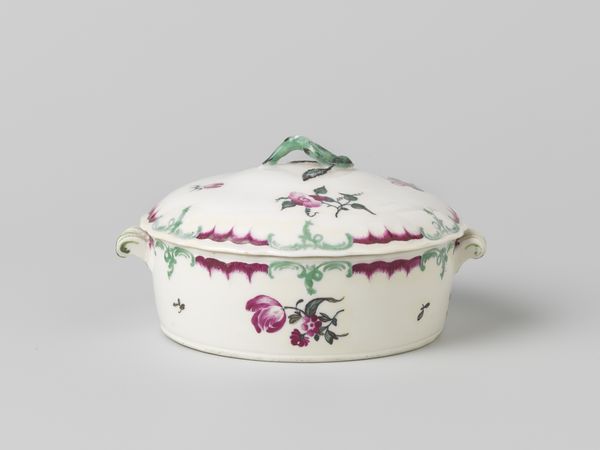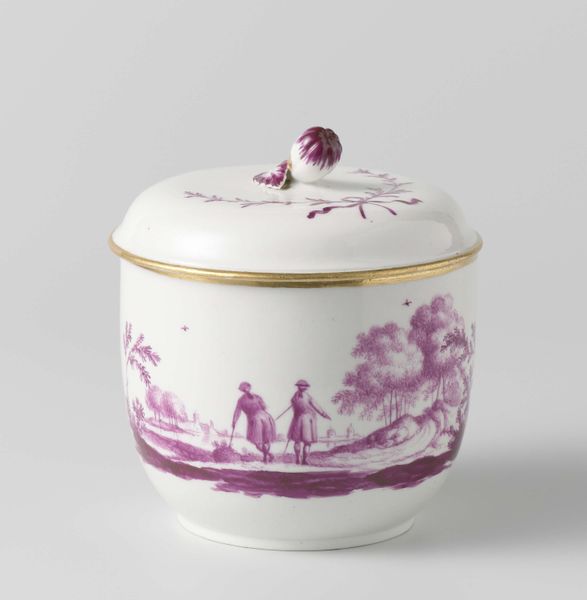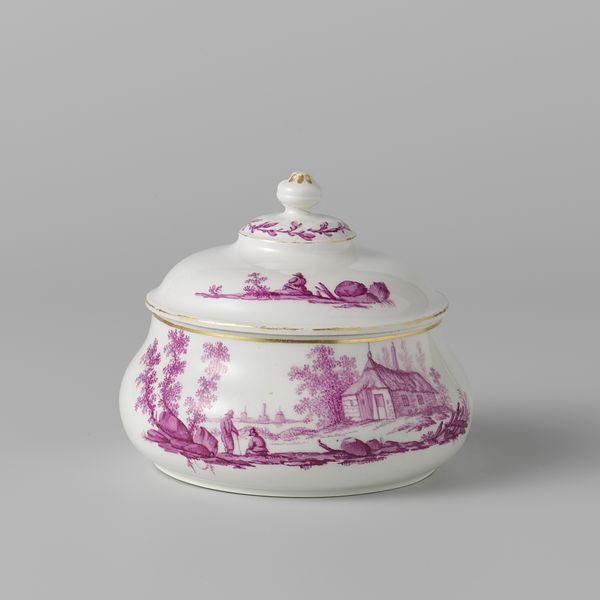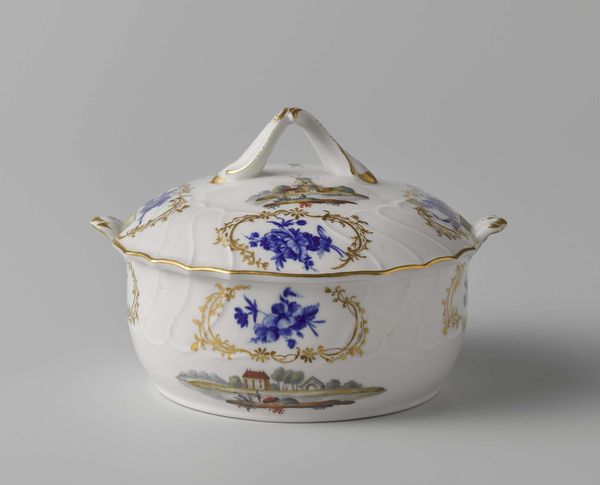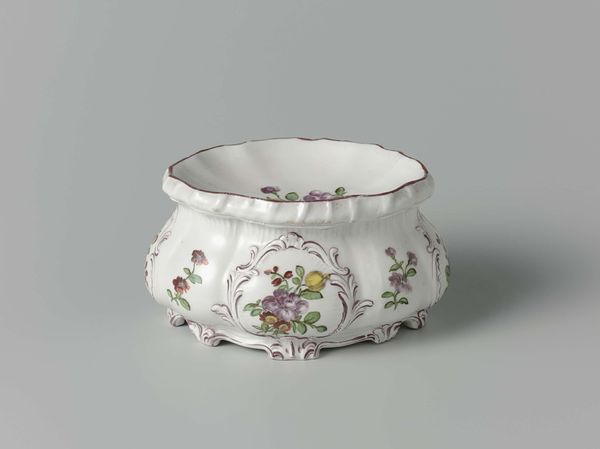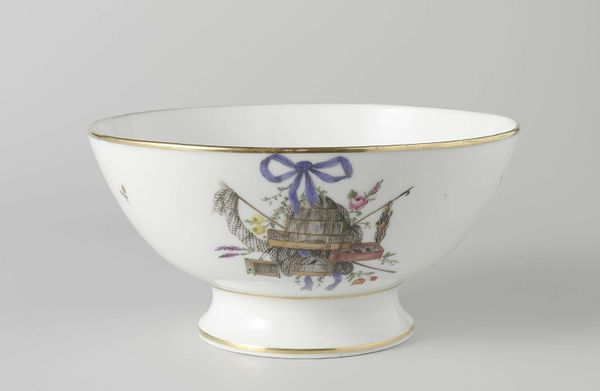
Deksel, veelkleurig beschilderd met figuren in een rivierlandschap c. 1774 - 1778
0:00
0:00
loosdrecht
Rijksmuseum
Dimensions: height 4.5 cm, width 13.5 cm, depth 9.5 cm
Copyright: Rijks Museum: Open Domain
This is a multicolored lid, likely from a sugar bowl, made in Loosdrecht, Netherlands. The purple figures are painted in a seemingly idyllic river landscape. But what are the social conditions that might have shaped this artistic production? Loosdrecht porcelain was produced for a mere 16 years in the late 18th century. Initially supported by the local lord, the factory struggled financially. The relatively limited output of Loosdrecht porcelain makes it highly collectible today, and as such it has become institutionalized in museum collections. But the imagery found on Loosdrecht porcelain can tell us much about the society that produced it. Scenes of leisure were a common subject, but we can learn more by considering the economic structures that made such leisurely pursuits possible. As historians, we must consider the social and institutional context to better understand the meaning of art. Researching the history of the Loosdrecht porcelain factory and the social history of the Netherlands in the late 18th century can help us to consider the role of art in society.
Comments
No comments
Be the first to comment and join the conversation on the ultimate creative platform.
